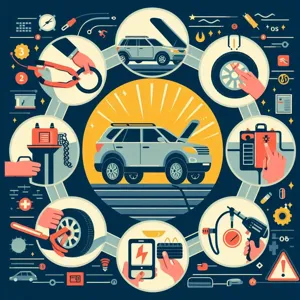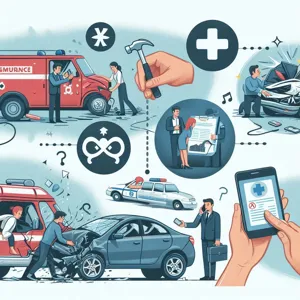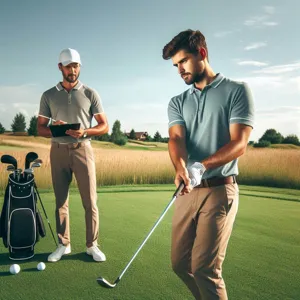There’s nothing quite like the freedom of hitting the open road, but the thrill of adventure can quickly turn into a nightmare when unexpected car problems arise.
From sudden engine troubles to flat tires, being stranded or dealing with a malfunction can be stressful and daunting, especially when you’re far from home. However, with the right knowledge and preparation, you can navigate these challenges with confidence and ease. In this blog post, we’ll equip you with essential tips to help you master the road and tackle car issues on the go. Whether you’re a seasoned road warrior or a casual weekend traveler, understanding how to diagnose problems, perform basic repairs, and know when to seek help can make all the difference between an enjoyable journey and a frustrating ordeal. Get ready to turn those potential roadblocks into stepping stones for your next adventure!
1. Introduction: The Importance of Being Prepared for Car Problems

When you’re out on the open road, the freedom of travel can quickly turn into a stressful situation if car problems arise. Whether it’s a flat tire, engine trouble, or unexpected warning lights, being unprepared can leave you feeling vulnerable and anxious. That’s why understanding the importance of being prepared for car problems is crucial for every driver.
Preparation begins long before you hit the highway. It involves a blend of knowledge, tools, and a proactive mindset that can make all the difference in a potentially dire scenario. Imagine yourself on a serene country road or navigating through bustling city traffic, when suddenly your car begins to sputter. Without the right preparation, what could have been a minor inconvenience might spiral into a frustrating ordeal.
Think of your vehicle as a loyal companion on your adventures. Just like any relationship, it thrives on attention and care. Regular maintenance checks, a well-stocked emergency kit, and a basic understanding of your car’s functions can empower you to handle issues confidently when they arise. This not only enhances your safety but also saves you time and money by preventing small issues from turning into major repairs.
So, as we embark on this journey toward mastering road readiness, let’s explore the essential tips and strategies that will equip you to tackle car problems with ease and assurance, ensuring that your travels remain as smooth and enjoyable as possible.
2. Common Car Issues You Might Encounter on the Road
When you’re out on the road, the last thing you want is for your car to start acting up. However, knowing the common car issues you might encounter can empower you to handle these situations with confidence and ease. Here are some of the most frequent problems drivers face and what you can do about them:
**1. Flat Tires:** One of the most common issues, flat tires can occur due to punctures, wear and tear, or even unfavorable road conditions. If you notice your car pulling to one side or hear a sudden thump, it’s time to pull over and inspect your tires. Always carry a spare tire, jack, and tire iron, and familiarize yourself with how to change a tire. Additionally, keeping a portable air compressor in your trunk can help you inflate a tire if it loses pressure unexpectedly.
**2. Overheating Engine:** An overheating engine can lead to severe damage if not addressed promptly. Keep an eye on the temperature gauge; if it starts climbing toward the red zone, pull over and switch off the engine. Check the coolant levels and look for leaks. If you’re low on coolant, adding water can serve as a temporary fix until you can get to a mechanic.
**3. Dead Battery:** A battery can fail without warning, leaving you stranded. Signs of a failing battery include dim headlights, slow engine cranking, or electrical issues. Always keep jumper cables in your vehicle, and if you find yourself with a dead battery, don’t hesitate to ask for help from fellow motorists or call roadside assistance.
**4. Brake Problems:** If your brakes feel spongy, make unusual noises, or your car pulls to one side when braking, it’s crucial to address these issues immediately. Pull over to a safe location and inspect the brake fluid level. If it’s low, topping it off may be a temporary solution, but seek professional help as soon as possible, as brake problems can jeopardize your safety on the road.
**5. Warning Lights:** Dashboard warning lights can indicate various issues, from a loose gas cap to more severe engine problems. Don’t ignore these alerts. If a warning light appears, pull over to a safe spot and consult your owner’s manual to understand its significance. Some lights may allow you to drive a short distance, while others require immediate attention.
Being prepared for these common car issues can make all the difference in your travel experience. Regular maintenance and inspections can help minimize the risk of encountering these problems, but knowing how to address them when they arise will ensure you stay safe and confident on the road. Always carry a basic emergency kit, including tools and supplies, and consider investing in a roadside assistance plan for added peace of mind.
3. Essential Tools and Supplies to Keep in Your Vehicle

When it comes to tackling car problems on the go, being well-prepared can make all the difference. Keeping a well-stocked arsenal of essential tools and supplies in your vehicle is not just a precaution—it’s a smart strategy that can save you time, money, and stress when unexpected issues arise. Here’s a breakdown of must-have items that every driver should consider keeping in their trunk or glove compartment.
**1. Basic Tool Kit:** A compact tool kit is your first line of defense against minor repairs. Equip yourself with a set of screwdrivers (both flathead and Phillips), pliers, an adjustable wrench, and a tire iron. These tools are invaluable for tightening loose parts or making quick adjustments.
**2. Jumper Cables:** A dead battery can strike at the most inconvenient times. Keeping a quality set of jumper cables in your vehicle means you can help yourself or assist a fellow motorist in need. Just remember to familiarize yourself with the proper connection process to avoid any mishaps.
**3. Tire Repair Kit:** Flat tires are one of the most common roadside emergencies. A tire repair kit, which typically includes tire plugs and a sealant, can help you patch a puncture temporarily, allowing you to reach the nearest service station without a hitch.
**4. First Aid Kit:** Safety should always be your priority. A well-stocked first aid kit can help you manage minor injuries or medical emergencies until professional help arrives. Look for kits that include adhesive bandages, antiseptic wipes, gauze pads, and a small pair of scissors.
**5. Flashlight and Extra Batteries:** Whether it’s a late-night breakdown or inspecting your engine during the day, a reliable flashlight is essential. Opt for a durable, waterproof model, and don’t forget to pack extra batteries to ensure it’s always ready when you need it.
**6. Emergency Flares or Reflective Triangles:** In the event of a breakdown, visibility is crucial. Emergency flares or reflective triangles alert other drivers to your presence, helping to prevent accidents. These items are especially important if you find yourself stranded on a busy road.
**7. Water and Non-Perishable Snacks:** While not tools, having water and snacks on hand can be a lifesaver if you’re stuck waiting for assistance. Staying hydrated and keeping your energy up helps maintain your focus and composure during frustrating situations.
**8. Roadside Assistance Membership:** Though not a physical tool, investing in a roadside assistance membership can provide peace of mind. Access to professional help—whether it’s a tow, a tire change, or a fuel delivery—can be invaluable in a pinch.
By taking the time to equip your vehicle with these essential tools and supplies, you’re setting yourself up for success on the road. With the right preparation, you can confidently handle car problems as they arise, allowing you to focus on the journey ahead instead of the bumps along the way.
4. Understanding Warning Lights: What They Mean
When you’re on the road, your vehicle’s dashboard can often feel like a cryptic language, especially when warning lights start illuminating in vibrant shades of red and yellow. Understanding what these signals mean is crucial for your safety and the longevity of your car. Each light serves as a communication tool from your vehicle, alerting you to potential problems that may require immediate attention or simply a watchful eye.
For instance, a temperature warning light could signify that your engine is overheating, which, if ignored, might lead to more severe damage down the line. Similarly, a battery warning light can indicate that your car’s electrical system is facing issues, possibly affecting your ability to start the vehicle. On the other end of the spectrum, the check engine light can be a bit more ambiguous, ranging from a loose gas cap to a more serious engine malfunction.
To avoid panic when those lights come on, familiarize yourself with the symbols in your owner’s manual. Many modern vehicles also provide handy smartphone apps that can interpret these warnings for you, offering insights into the severity of the issue and recommended next steps.
Taking a proactive approach by keeping an eye on these warning lights allows you to address potential issues early, preventing roadside breakdowns and costly repairs. Remember, your dashboard is not just a panel of lights; it’s your car’s way of keeping you informed and ensuring that your journey remains safe and smooth. So, the next time a warning light flickers to life, don’t dismiss it—take a moment to understand its meaning and act accordingly.
5. How to Conduct a Quick Vehicle Inspection

When you’re on the road, a little preventive maintenance can go a long way in avoiding major headaches later. Conducting a quick vehicle inspection can help you catch potential issues before they escalate, ensuring your journey remains smooth and hassle-free. Here’s how to perform a rapid yet thorough assessment of your vehicle while keeping safety in mind.
**1. Start with the Exterior:** Before you even slide into the driver’s seat, take a moment to walk around your car. Check for any visible damage, like dents or scratches, and ensure that your tires are properly inflated. Look for any signs of wear or flatness in the tires; a quick visual inspection of the tread can reveal if they’re ready for replacement. Also, check your headlights and taillights to ensure they’re functioning properly—this is crucial for your safety, especially if you find yourself driving after dark.
**2. Pop the Hood:** Once you’re inside, don’t skip opening the hood. Begin by checking the oil level using the dipstick; low oil can lead to engine trouble. Next, inspect the coolant reservoir to ensure it’s filled to the recommended level, as overheating can be a common road hazard. Finally, take a look at the battery terminals for any corrosion and make sure they’re tightly connected.
**3. Assess the Brakes:** While you can’t always inspect brakes without professional tools, you can pay attention to any unusual sounds when you press the pedal or check for a spongy feel. If you notice anything alarming, it’s best to have them looked at before hitting the highway.
**4. Monitor Dashboard Indicators:** Your vehicle’s dashboard is equipped with warning lights designed to inform you of potential issues. Make it a habit to check these indicators before you drive. If any lights are illuminated, take them seriously and investigate further.
**5. Check Your Essentials:** Ensure you have a spare tire, jack, and emergency kit in case you need them while on the road. Familiarize yourself with the location of these items, as they can be lifesavers in unexpected situations.
Taking a few moments to conduct this quick vehicle inspection can help you avoid breakdowns and ensure you’re ready for the open road. A little diligence goes a long way in making sure your travels are not just enjoyable but safe as well. Remember, when it comes to car problems, an ounce of prevention is worth a pound of cure!
6. Dealing with a Flat Tire: Step-by-Step Guide
Encountering a flat tire while on the road can be a stressful experience, but with a little preparation and knowledge, you can handle it confidently and safely. Here’s a step-by-step guide to help you navigate this common roadside issue.
**1. Find a Safe Location**
As soon as you notice your tire is flat, remain calm and reduce your speed. Look for a safe place to pull over, away from traffic. An empty parking lot, a rest area, or the shoulder of a road with ample space is ideal. Once stationary, engage your hazard lights to alert other drivers.
**2. Gather Your Tools**
Before you start the repair, ensure you have the necessary tools. Typically, you’ll need a spare tire, a jack, a lug wrench, and possibly a tire pressure gauge. If you don’t already have these essentials in your vehicle, consider investing in a roadside emergency kit to prepare for any unexpected situation.
**3. Loosen the Lug Nuts**
Using the lug wrench, begin loosening the lug nuts on the flat tire. It’s best to do this while the tire is still on the ground, as it prevents the wheel from spinning. Turn the lug nuts counterclockwise until they are loose enough to remove by hand.
**4. Jack Up the Vehicle**
Next, locate the vehicle’s jack point, usually found beneath the frame near the flat tire. Place the jack securely under this point and begin lifting the vehicle until the flat tire is off the ground. Make sure the jack is stable, and avoid putting any part of your body under the vehicle while it’s elevated.
**5. Remove the Flat Tire**
With the vehicle raised, completely remove the loosened lug nuts and carefully take off the flat tire. Set it aside in a safe spot, ensuring it won’t roll away or become a tripping hazard.
**6. Install the Spare Tire**
Align the spare tire with the wheel hub, ensuring it fits snugly over the bolts. Hand-tighten the lug nuts onto the bolts, securing the spare tire in place. Once it’s on, lower the vehicle back to the ground.
**7. Tighten the Lug Nuts**
With the vehicle back on solid ground, use the lug wrench to tighten the lug nuts completely. It’s important to do this in a star pattern (across from each other) to evenly distribute the pressure and secure the tire properly.
**8. Store the Flat Tire and Tools**
Lastly, store the flat tire and your tools back in your vehicle. Don’t forget to check the pressure on the spare tire before you continue your journey, as some spares can also lose air over time.
Handling a flat tire doesn’t have to be a daunting task. With this step-by-step guide, you can get back on the road quickly and safely, equipped with the knowledge to tackle one of the most common car problems drivers face. Remember, regular maintenance checks and keeping your emergency kit stocked can make all the difference when trouble strikes.
7. Jumpstarting a Dead Battery: Tips and Tricks

A dead battery can be one of the most frustrating issues to encounter on the road, leaving you stranded and anxious about how to get back on track. Fortunately, jumpstarting a dead battery is a straightforward process that can be mastered with a bit of knowledge and preparation.
First and foremost, ensure you have a reliable set of jumper cables handy in your vehicle. These cables are usually color-coded—red for positive and black for negative—making it easy to connect them correctly. Before you begin, it’s essential to assess the situation: is the dead battery in your vehicle, or are you helping out a fellow motorist? If it’s your battery, you’ll need a good Samaritan with a functioning vehicle willing to lend a hand.
When you’re ready to jumpstart, park the working vehicle close enough to your car so the jumper cables can reach both batteries, but make sure the vehicles aren’t touching. Turn off both ignitions, as this reduces the risk of electrical surges. Attach the red cable to the positive terminal of the dead battery first, followed by the other end to the positive terminal of the good battery. Next, connect the black cable to the negative terminal of the good battery, and then attach the other end to an unpainted metal surface on the car with the dead battery. This serves as a ground and minimizes the risk of sparks near the battery.
Once everything is connected, start the working vehicle and let it run for a few minutes. This allows the dead battery to absorb some charge. Then, try starting your vehicle. If it sputters to life, great! Allow it to run for a while to help recharge the battery further. If it doesn’t start, double-check your connections and give it another shot.
After successfully jumpstarting, remember to disconnect the cables in the reverse order of how you connected them. Always be cautious and avoid letting the jumper cable clamps touch each other to prevent any electrical mishaps. Lastly, consider visiting a mechanic soon to assess the health of your battery, as repeated jumpstarts can indicate a battery on its last leg.
Being prepared with these tips can transform a potentially stressful situation into a manageable one, ensuring you master the road and keep moving forward.
8. Overheating Engine: Causes and Immediate Actions
An overheating engine is not just a minor inconvenience; it can lead to severe damage if not addressed promptly. Understanding the common causes of engine overheating and knowing the immediate actions to take can save you both time and money on the road.
### Causes of Overheating
Several factors can contribute to an engine running hot. The most common culprits include:
1. **Coolant Issues**: Low coolant levels or a leak in the cooling system can result in insufficient coolant circulation, leading to overheating. Check your reservoir periodically and top off as needed.
2. **Thermostat Failure**: The thermostat regulates the flow of coolant. If it becomes stuck closed, it can prevent coolant from circulating through the engine, causing temperatures to soar quickly.
3. **Radiator Problems**: A clogged or damaged radiator can impede heat dissipation. Debris buildup, corrosion, or a broken radiator fan can exacerbate this issue.
4. **Water Pump Failure**: The water pump is responsible for circulating coolant throughout the engine. If it fails, the engine can quickly overheat due to a lack of proper coolant flow.
5. **Oil Issues**: Engine oil not only lubricates moving parts but also plays a role in temperature regulation. Low oil levels or dirty oil can lead to increased friction and heat.
### Immediate Actions to Take
If you notice your engine temperature gauge rising or see warning lights indicating overheating, take the following steps immediately:
1. **Pull Over Safely**: As soon as it’s safe to do so, pull over to the side of the road. Turn off the engine to prevent further damage.
2. **Wait for the Engine to Cool**: Allow the engine to cool for at least 15-30 minutes before attempting to inspect it. Opening the hood can help dissipate heat more quickly.
3. **Check Coolant Levels**: Once the engine has cooled, carefully open the hood and check the coolant reservoir. If it’s low, you may need to add coolant or water. However, never open the radiator cap while the engine is hot, as it could lead to burns from steam or hot coolant.
4. **Inspect for Leaks**: Look under the vehicle for any signs of leaking coolant. If you spot a puddle or see coolant spraying, it may indicate a more significant issue that requires professional assistance.
5. **Contact a Professional**: If you’re unable to identify the problem or if the engine continues to overheat after adding coolant, it’s best to call for roadside assistance. Driving an overheating vehicle can cause catastrophic engine damage, so don’t take any chances.
By understanding the causes of an overheating engine and knowing how to respond, you can prevent minor issues from escalating into major repairs. Stay vigilant and proactive, and you’ll be better equipped to handle this common car problem when it arises on your travels.
9. Handling Fuel Issues: Running Out of Gas or Contaminated Fuel
When it comes to handling fuel issues, two scenarios can quickly turn your smooth drive into a stressful situation: running out of gas and dealing with contaminated fuel. Both can lead to unexpected delays and headaches, but being prepared can help you navigate these challenges with ease.
**Running Out of Gas**
We’ve all been there—lost in thought, jamming to your favorite playlist, when suddenly the fuel gauge dips perilously close to “E.” If you find yourself running low on gas and unable to reach a station, the first step is to stay calm. Pull over to a safe location, turn off your engine, and assess your options. If you’re in a remote area, consider using a roadside assistance app to call for help; many services will send someone to bring you fuel. If you have a friend or family member nearby, a quick phone call could save the day. In the future, it’s wise to keep a portable fuel container in your trunk for emergencies, ensuring you’re never left stranded.
**Dealing with Contaminated Fuel**
Contaminated fuel can lead to a host of engine problems, from poor performance to complete breakdowns. Signs of contaminated fuel include sputtering, difficulty starting your engine, or unusual noises from the fuel system. If you suspect you’ve filled up with bad gas, the best course of action is to pull over and turn off your engine to prevent further damage. If you’re able to, have your vehicle towed to a trusted mechanic who can drain the tank and inspect the fuel system. To minimize the risk of this issue, always refuel at reputable gas stations and consider using a fuel additive as a preventative measure.
By knowing how to handle fuel issues, you can keep your vehicle running smoothly and reduce the chances of being sidelined by unexpected fuel mishaps. Remember, a little preparation goes a long way in mastering the road ahead.
10. When to Call for Help: Knowing Your Limits
When you’re on the road, it’s vital to recognize that not every car problem can be resolved with a simple fix or a little ingenuity. While it’s essential to equip yourself with the knowledge and tools to handle minor issues, there comes a time when calling for professional help is the wisest course of action. Understanding your limits not only ensures your safety but also prevents further damage to your vehicle.
So, when should you pick up that phone and call for assistance? If your vehicle has started making unusual noises—like grinding, clanking, or hissing—trust your instincts. These sounds can indicate serious mechanical problems that may worsen if ignored. Additionally, if warning lights on your dashboard start flashing, such as the engine or oil light, it’s a clear signal that your car requires immediate professional attention.
Another red flag is if you find yourself stranded due to a flat tire or a dead battery. While you may be able to change a tire or jumpstart a battery with the right tools, if you’re in an unfamiliar location or feel unsafe, it’s best to call for roadside assistance. Your safety should always take precedence over any DIY attempts.
Furthermore, if you’re experiencing issues like overheating or smoke emanating from the engine, pull over and turn off your vehicle immediately. Attempting to drive a car in such a condition can lead to catastrophic damage, not to mention the risk of a fire hazard.
Remember, knowing when to ask for help is a sign of wisdom, not weakness. Being proactive about seeking assistance can save you time, money, and stress in the long run. Carrying the contact information of a reliable roadside assistance service or having a trusted mechanic on speed dial can make all the difference when you find yourself facing the unexpected on your journey. By recognizing your limits and embracing the support available to you, you can navigate car troubles with confidence and peace of mind.
11. Preventive Maintenance Tips to Avoid Roadside Issues
When it comes to ensuring a smooth journey and avoiding unexpected roadside mishaps, preventive maintenance is your best friend. Regularly inspecting and maintaining your vehicle can save you time, money, and stress down the line. Here are some essential preventive maintenance tips that every driver should incorporate into their routine.
First and foremost, **check your oil levels** regularly. Engine oil is the lifeblood of your car, helping to lubricate moving parts and prevent overheating. Make it a habit to check your oil level monthly and change it according to your vehicle manufacturer’s recommendations. Clean oil ensures your engine operates efficiently and can prevent costly repairs.
Next, **inspect your tires**. Tires are your only contact with the road, so maintaining their health is crucial for safety and performance. Look for signs of wear, check the tread depth, and ensure they’re properly inflated. Rotate your tires every 5,000 to 8,000 miles to ensure even wear, and don’t forget to keep a spare tire and tools handy in case of emergencies.
Another critical area to focus on is your **brake system**. Squeaking or grinding noises, a soft brake pedal, or a warning light on your dashboard are all signs that your brakes may need attention. Regularly testing and servicing your brakes can help you avoid serious accidents and ensure you can stop safely.
Don’t overlook your **battery health**, either. Car batteries can fail unexpectedly, often without any warning. Check for corrosion on the terminals, and ensure your battery is securely mounted. If your battery is older than three years, it’s wise to have it tested annually to prevent any surprises.
Finally, keep an eye on your **fluid levels**. This includes coolant, transmission fluid, brake fluid, and windshield washer fluid. Low levels can lead to overheating, transmission issues, or poor visibility, all of which can result in roadside problems. Regularly topping off these fluids can help your vehicle run smoothly and efficiently.
By investing a little time in preventive maintenance, you can significantly reduce the likelihood of roadside issues and enjoy peace of mind on your travels. Remember, a well-maintained vehicle is not just about avoiding breakdowns; it’s also about ensuring your safety and the safety of those around you. So take these tips to heart, and keep your car in top shape for every journey ahead.
12. Emergency Contacts: Who to Call and When
When trouble strikes on the road, knowing who to call can be just as critical as having a spare tire or a first-aid kit. Emergency contacts are your lifeline during a car crisis, providing the support and expertise needed to navigate unexpected situations. Start by creating a list of essential contacts, ensuring they are easily accessible—perhaps saved in your phone or written down in your glove compartment.
**1. Roadside Assistance Services:** If you have a membership with AAA, your insurance company, or an auto club, their roadside assistance hotline should be your first call for issues like flat tires, dead batteries, or locking your keys inside the car. These services often provide quick help and can even tow your vehicle to a nearby mechanic if necessary.
**2. Mechanics and Repair Shops:** Having a trusted mechanic’s number saved in your contacts can save you time and stress. Whether you need a tow or advice on a strange noise your car is making, reaching out to a professional can provide clarity and assistance.
**3. Family or Friends:** Sometimes, a familiar voice can ease the panic that sets in during a roadside emergency. Whether it’s a family member who can offer advice, a friend who can come to your aid, or someone who can help you with a ride if your car is immobile, having this support network can be invaluable.
**4. Insurance Provider:** In the unfortunate event of an accident, your insurance company should be contacted promptly to report the incident and initiate a claim. They can guide you through the process and help you understand your coverage, ensuring you are effectively protected during your time of need.
**5. Local Authorities:** If you find yourself in a situation where safety is a concern, such as a breakdown in a high-traffic area or an accident involving injury, don’t hesitate to call local law enforcement. They can help manage the scene, direct traffic, and ensure you receive any necessary medical assistance.
When you’re prepared with a list of emergency contacts, you’re not just easing your own mind—you’re setting yourself up for a more manageable response to whatever challenges the road throws your way. Always remember: staying calm and knowing who to reach out to is half the battle when handling car problems on the go.
13. Staying Calm: Managing Stress During Car Troubles
Car troubles can strike at the most inconvenient moments, turning a simple trip into a stressful ordeal. Whether you’re on a busy highway, stuck in a parking lot, or in the middle of nowhere, the key to handling these unexpected situations lies in maintaining your composure. Staying calm is not just about keeping your cool; it’s about empowering yourself to think clearly and take the necessary steps to resolve the issue.
When faced with car problems, your first instinct may be to panic, but taking a deep breath can work wonders. Start by assessing the situation. Is it a flat tire, overheating engine, or a dead battery? Understanding the nature of the problem can help you determine your next steps. If you’re safe and your vehicle is in a secure location, take a moment to gather your thoughts. Remember that many drivers experience vehicle malfunctions, and most issues can be resolved with a bit of patience and a plan.
If you’re feeling overwhelmed, don’t hesitate to reach out for support. Whether it’s calling a roadside assistance service, contacting a knowledgeable friend, or even seeking help from fellow motorists, don’t underestimate the power of a little assistance. Having a reliable contact list of mechanics or towing services saved in your phone can also ease anxiety in stressful times.
Moreover, keeping a roadside emergency kit in your vehicle can provide peace of mind. Stock it with essentials like jumper cables, a flashlight, basic tools, and first aid supplies. Knowing you’re prepared can significantly reduce stress levels when things go awry.
Finally, practice self-care techniques to manage stress effectively. Listen to calming music, use breathing exercises, or visualize a positive outcome. By staying calm and collected, you’re not only more likely to solve the problem at hand but also to ensure your safety and well-being. Remember, every driver faces car troubles at some point, and how you handle them can make all the difference in turning a frustrating situation into a manageable experience.
14. Resources for Roadside Assistance and Repair Services
When you find yourself facing car troubles on the road, having access to reliable resources for roadside assistance and repair services can make all the difference. Planning ahead and knowing where to turn in times of automotive distress can save you time, money, and unnecessary stress.
Start by familiarizing yourself with the roadside assistance programs offered by your insurance provider or credit card company. Many insurers offer complimentary services or at least discounted rates for their policyholders. Additionally, some credit cards provide roadside assistance as a perk, making it worthwhile to check the benefits associated with the cards you carry.
In addition to insurance and credit card options, consider downloading popular roadside assistance apps, such as AAA Mobile, Urgently, or Honk. These apps allow you to easily request help, track your service provider, and even access user reviews to ensure you’re getting quality assistance. Also, keep a list of local towing and repair services saved in your phone; having these contacts easily accessible can expedite the process of getting your vehicle back on the road.
For those who love to be prepared, investing in a membership with a service like AAA or a similar organization can provide peace of mind. Membership often includes not only roadside assistance but also various discounts on travel, restaurant dining, and even automotive services, making it a practical investment for frequent travelers.
Lastly, don’t underestimate the power of community. Social media groups and forums dedicated to local automotive enthusiasts can be invaluable resources. They often share recommendations for trusted mechanics and quick-fix solutions that can help you get back on the road sooner rather than later.
By equipping yourself with the right resources and knowledge, you’ll feel more confident and prepared to handle any car problems that may come your way while traveling. Remember, a little preparation goes a long way in ensuring a smoother ride, no matter what challenges you may encounter.
15. Conclusion: Empowering Yourself for Future Road Trips
As we wrap up our journey through the essential tips for handling car problems on the go, it’s clear that being prepared is your best ally when hitting the open road. Road trips are meant to be exhilarating adventures filled with exploration and spontaneity, but they can quickly turn daunting when faced with unexpected car troubles. The key takeaway from our discussion is empowerment—equipping yourself with knowledge, tools, and a proactive mindset can make all the difference.
By familiarizing yourself with common car issues, understanding basic troubleshooting techniques, and knowing how to effectively communicate with roadside assistance or mechanics, you’ll be able to navigate challenges with confidence. Remember to keep an emergency kit stocked with essentials like a spare tire, first-aid supplies, and basic tools; these items can turn a potential crisis into a manageable inconvenience.
Moreover, embracing technology—whether through roadside assistance apps, navigation tools, or car diagnostic apps—can provide real-time support and keep you informed. And don’t forget the importance of regular vehicle maintenance; a well-cared-for car is less likely to leave you stranded.
As you set out on your next road trip, take these insights and tips with you. Approach the journey not just as a means to an end, but as an opportunity for learning and growth. With the right preparation and mindset, you’ll not only master the road but also create memorable experiences along the way. Safe travels!
In conclusion, mastering the road and being prepared for car problems on the go is essential for any driver. By equipping yourself with the knowledge and tools outlined in this article, you’ll find that you can navigate unexpected challenges with confidence and ease. Whether it’s knowing the importance of routine maintenance or having a reliable emergency kit at your disposal, these tips will empower you to tackle any situation that arises. Remember, a little preparation goes a long way in ensuring your journey remains smooth and enjoyable. So, take these insights to heart, stay vigilant on the road, and embrace the freedom of driving without fear of the unknown. Safe travels!




































